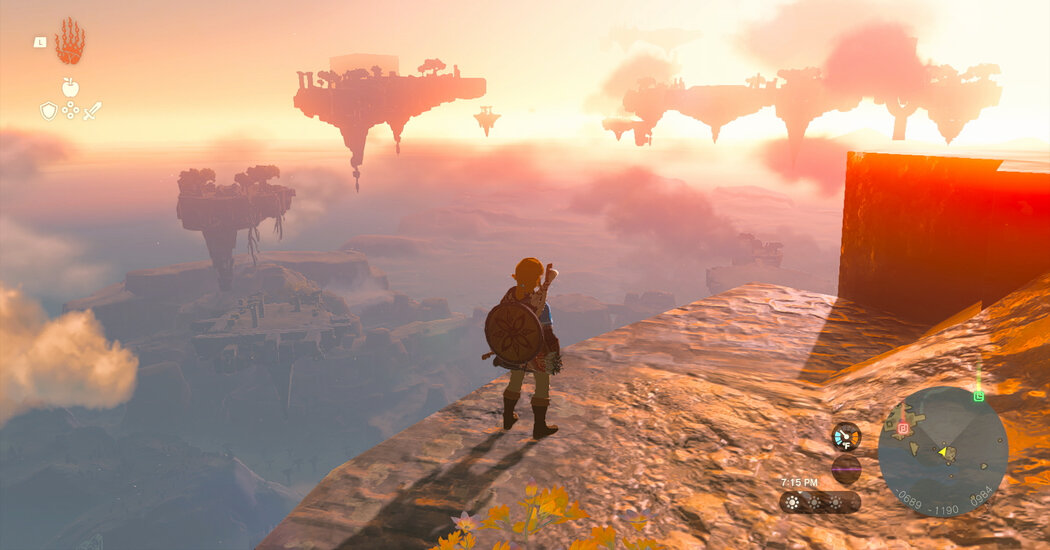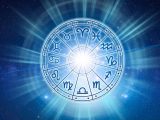
To Meet Sky-High Expectations, Tears of the Kingdom Goes Vertical
05/12/2023When Breath of the Wild was released in 2017, it rescued The Legend of Zelda, a video game franchise growing stale because of a predictable gameplay loop of dungeons and fetch quests. By re-emphasizing freedom, the game allowed players to experiment with a dynamic physics system in ways that even its developers did not fully anticipate.
Its direct sequel, Tears of the Kingdom, had its own burdens.
Many wondered how the series producer Eiji Aonuma and the director Hidemaro Fujibayashi might outdo themselves in the follow-up to Breath of the Wild, which has been frequently cited as one of the best games ever made.
Yet they have mostly succeeded, with an experience almost triple the size, one brimming with caves, chasms and sky islands. New abilities allow players to manipulate virtually any object and build rickshaws and rail cars. Classic dungeons return in the form of multilayered temples with interlocking puzzles.
The New York Times met this week with Aonuma and Fujibayashi to discuss Tears of the Kingdom, released for the Nintendo Switch on Friday, and what sets it apart from its predecessors.
The idea of exploring the sky began with the first mainline Zelda game that Fujibayashi directed: Skyward Sword for the Nintendo Wii. That game was criticized in part because of loading screens between the sky world and the surface world. But in Tears of the Kingdom, players can magically jump through ceilings or glide through the skies.
“When I proposed the idea to seamlessly explore the world vertically, from the very top to the very bottom, I knew I was making a ridiculous request,” said Fujibayashi, who acknowledged that many of his original ideas came to fruition in Tears of the Kingdom.
Aonuma added that Skyward Sword may have left his colleague with a “sense of dissatisfaction that something was incomplete.”
Tears of the Kingdom feels like the first Zelda game to fully grasp the three-dimensional space the franchise first explored in Ocarina of Time, a lauded effort for the Nintendo 64. Perfecting how players interact with the sky islands — “If you put them too high, the islands look like specks of trash,” Aonuma said — required plenty of trial and error.
“When you are in the sky, the feeling of gravity is a little different, and we wanted to optimize the gameplay experience,” Fujibayashi said. “To figure out where to draw the line, I personally dove off many sky islands to nail down what feels good.”
The sky islands appear after what residents of the game’s fictitious kingdom of Hyrule call the Upheaval, which unfolds in the game’s opening scenes. Princess Zelda has stumbled upon the mummified remains of Ganondorf, a demon king sealed away 10,000 years ago. The seal is broken, and her loyal knight, Link, shatters his sacred sword while defending her. The hero loses consciousness; the princess vanishes in a time warp.
One major narrative theme in Tears of the Kingdom is the idea of legend: The Imprisoning War was mentioned in A Link to the Past, released for the Super Nintendo in 1991, but it was not described in detail until now. Aonuma said creating new stories often requires drawing on Zelda mythology, which fans have spent considerable hours studying to create a timeline of the franchise.
“It’s like archaeology,” Fujibayashi added. “It’s not fixing history, but making new discoveries.”
Although Tears of the Kingdom arrives with Ganondorf taking his traditional role as the series villain, it does not give much depth to his character. Some fans hoped the game would follow the lead of the GameCube’s Wind Waker, which explained that Ganondorf’s hatred for Hyrule was the result of enduring his own people’s suffering in the arid desert.
“It’s very possible from here on out that we will be able to see further character development and changes to his personality as the series continues,” Aonuma said, adding, “Ganondorf is an ingredient that we use to supplement gameplay.”
Forty hours into the game, it is clear that most of its content remains unseen. Beyond combat and puzzles, there are dozens of side quests, like meddling in a contentious mayoral election or helping the local newspaper’s investigative reporter get his scoops.
Fujibayashi said one of his favorite side quests involved forest spirits called Koroks, who are trying to reunite; in a nod to the game’s flexibility, some Nintendo employees handled them gently, while others would strap a Korok onto a rocket and shoot it into space. A quest to revive the Great Fairies by bringing a traveling band back together stood out for Aonuma, who said he had been fascinated by the Irish drum since the instrument was featured in The Wind Waker.
Similar moments of delight — or shock — are sprinkled throughout Tears of the Kingdom.
When a player’s makeshift rocket ship falls apart, Link plummets back to earth like Wile E. Coyote. Attaching steak onto an arrow lures enemies toward a tasty meal. In one playthrough, spelunking in a deep chasm ended abruptly when a giant frog appeared, noticeable only by its single glowing eye and the sound of its inhaling Link.
Source: Read Full Article

